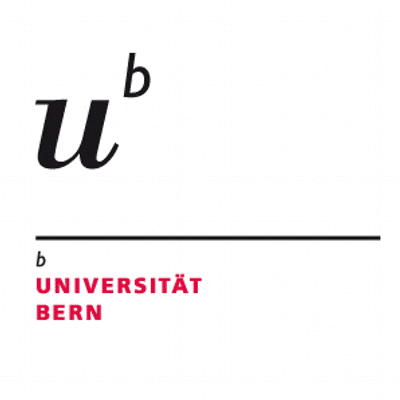预约演示
更新于:2025-05-07
Bombesin receptor
更新于:2025-05-07
基本信息
别名 Bombesin receptors、铃蟾肽受体 |
简介- |
关联
44
项与 Bombesin receptor 相关的药物靶点 |
作用机制 GRPR调节剂 |
非在研适应症 |
最高研发阶段临床3期 |
首次获批国家/地区- |
首次获批日期1800-01-20 |
靶点 |
作用机制 GRPR拮抗剂 |
在研适应症 |
非在研适应症 |
最高研发阶段临床2期 |
首次获批国家/地区- |
首次获批日期1800-01-20 |
靶点 |
作用机制 GRPR拮抗剂 |
在研适应症 |
最高研发阶段临床2期 |
首次获批国家/地区- |
首次获批日期1800-01-20 |
48
项与 Bombesin receptor 相关的临床试验CTR20241939
一项在既往内分泌治疗联合CDK4/6抑制剂治疗后进展的胃泌素释放肽受体阳性、雌激素受体阳性、人表皮生长因子受体-2阴性、转移性乳腺癌成人患者中评价 [177Lu]Lu-NeoB联合卡培他滨的开放标签、多中心、I/II期试验
I期部分旨在确定在既往内分泌治疗联合CDK4/6抑制剂治疗后进展的胃泌素释放肽受体阳性、雌激素受体阳性、人表皮生长因子受体-2阴性转移性乳腺癌成人患者中 [177Lu]Lu-NeoB联合卡培他滨治疗的推荐剂量(RD)和给药方案。II期部分旨在评价 [177Lu]Lu-NeoB两种不同剂量/方案联合卡培他滨治疗的初步抗肿瘤活性(剂量优化)。
开始日期2025-03-20 |
申办/合作机构 |
100 项与 Bombesin receptor 相关的临床结果
登录后查看更多信息
100 项与 Bombesin receptor 相关的转化医学
登录后查看更多信息
0 项与 Bombesin receptor 相关的专利(医药)
登录后查看更多信息
1,641
项与 Bombesin receptor 相关的文献(医药)2025-05-01·Clinical Nuclear Medicine
Using mpMRI, PSMA, and GRPR PET to Assess Focal Therapy Eligibility and Plan Treatment in Biopsy-proven Low-/Intermediate-risk Prostate Cancer: A Whole-mount Pathology-based Study
Article
作者: Zhou, Ming ; Xiao, Ling ; Li, Yujia ; Seifert, Robert ; Cai, Yi ; Tang, Yongxiang ; Hu, Shuo ; Yang, Jinhui ; Gao, Xiaomei ; Rominger, Axel ; Shi, Kuangyu
2025-05-01·Clinical Nuclear Medicine
18F-FDG PET/CT Positive and 68Ga-DOTA-Bombesin PET/CT Negative Focus of Benign Apocrine Metaplasia Mimicking Malignancy
Article
作者: Özkan, İrem Aylin ; Baloğlu, Mehmet Can ; Akgün, Elife ; Çermik, Tevfik Fikret ; Alçin, Göksel ; Arslan, Esra
2025-05-01·Journal of Global Antimicrobial Resistance
Analysis of two Nocardia brasiliensis class A β-lactamases (BRA-1 and BRS-1) and related resistance to β-lactam antibiotics
Article
作者: Edoo, Zainab ; Songo, Aimee ; Compain, Fabrice ; Woerther, Paul-Louis ; Jacquier, Hervé ; Danjean, Maxime ; Arthur, Michel ; Dorchène, Delphine ; Lebeaux, David
44
项与 Bombesin receptor 相关的新闻(医药)2025-05-04
在放射性药物偶联物(Radiopharmaceutical Drug Conjugates, RDC)的研发中,设置专利保护是确保技术独占性和商业价值的关键环节。本篇文章将从“靶向配体”出发,尝试探讨在专利保护时可能需要重点关注的方面。从靶向配体出发的专利保护考量byTiPLab 攒生从靶向配体出发的创新主要体现在两个方向:其一,开发新的靶向配体;其二,将现有靶向配体应用于RDC领域。对于新的靶向配体,可单独对其进行专利保护;而对于已有配体的改进,则可对包含该配体的前体组合进行专利保护。下面将分别阐述这两种情况下,专利权利要求的设计思路及可能遇到的审查挑战。靶向配体的专利保护在RDC药物研发的早期阶段,企业可以对新开发的靶向配体构建通式,并进行单独的专利保护。在对通式的保护过程中,通常会遇到“支持问题”,其判断依据是,本领域技术人员是否可以合理预期,在通式所涵盖的范围中的所有等同替代方式都能具有相同的效果。随着产品开发进入后期,商业化产品的特征逐渐清晰,企业可在结构通式基础上,针对靶向配体的关键结构细化专利保护范围。在构建了较为完善的靶向配体权利要求之后,企业还可以进一步扩展保护方向,保护包含靶向配体的前体结构,形成全方位的多层次保护。以诺华开发的FAP-2286为例,其是一种与FAP结合的环状肽,可偶联放射性核素实现诊疗一体化,已开发出一款177Lu标记的靶向成纤维细胞活化蛋白(FAP)多肽偶联核素产品,目前处在I/II期临床阶段。申请人首先递交了专利家族PCT/EP2020/069308(申请日2020年7月8日)对一类配体进行了单独的专利保护,并在从属权利要求中宽泛地限定该靶向配体能够与任意螯合剂和任意接头共价连接,涵盖了FAP-2286的结构组成。目前,该专利家族在中国已获得专利授权(公开号:CN114341158B),其权利要求1采用“马库什权利要求”方式,通过通式结构涵盖具有共同母核的可变取代基组合,保护了一类环状肽结构。CN114341158B权利要求1部分特征当商业化产品的特征逐渐明确时,可以考虑更为针对商业化产品的小范围专利,比如后续专利家族PCT/EP2022/050280(申请日2022年1月7日)围绕靶向配体做了进一步限定,同样未限定linker、螯合剂或核素类型,仍然涵盖FAP-2286的结构组成,这种保护方式能够有效阻止竞争者将本专利保护的一类配体应用于RDC领域。在对于靶向配体单独进行专利保护时,由于靶向配体产生治疗效果的关键因素是结合能力。因此,在评估上述专利的授权前景时,主要关注的技术效果是靶向配体的靶向能力。同时,由于通式涵盖了较宽的保护范围,常常会遇到“支持性”问题。比如,在CN114341158B的审查过程中,主要关注的焦点在于权利要求1所概括的较大的环肽范围是否都具有FAP活性——即是否得到说明书支持。对于这类问题,申请人可以尝试从以下角度进行解释:证明说明书实施例与权利要求的涵盖范围存在“合理预期”。具体而言,权利要求1所涵盖的化合物都含有相同的苯基二硫醚部分,并且按照取代基种类可以分为不同的类型。在实施例中,通过三种不同的测定方法,提供了80种配体的FAP结合活性,分别展开了通式中所列出的肽取代基(比如己基Hex、辛基Oct等)、保护基取代基(Abl)(比如戊基NH-脲、戊基-SO2等)和氨基酸取代基(Aaa)(比如4-吡啶基4Pya、氨基磺酰丁基H2NSO2-But、乙酰化高丝氨酸AC-Hse、乙酰化α-氨基己二酸AC-Aad等)的广泛组合。此外,实施例中还列出数据说明了具有缀合的螯合剂的化合物与不含螯合剂但肽序列相似的化合物具有非常相似的活性。通过对具有不同取代基的代表性化合物的活性测试结果,本领域技术人员可以合理地确定权利要求所有要求保护的化合物都具有FAP结合活性。前体组合的专利保护在RDC药物开发中,当申请人基于已有研究的配体开发产品时,可通过通式-限定关键技术特征-具体结构的递进式权利要求设计,构建多层次专利壁垒。1. 通式基于靶向配体、连接子(linker)、螯合剂的组合逻辑,申请人可以尝试构建以通式结构为核心的平台式权利要求。在这种情况下,需要注意现有技术是否已公开类似组合逻辑,如果是,那么该宽泛权利要求的创造性可能存在较大的挑战。在PCT/US2008/073375专利家族(公布文本WO2009026177A1,申请日2008年8月15日)中,申请人最初想要保护PSMA配体+linker+药物的概念。WO2009026177A1的权利要求1 然而对比文件US20070160617A1公开了一种PSMA抗体-药物缀合物,其中linker部分的结构通式为An-Ym-Zm-Xn-Wn,A与PSMA配体相连接,Y和Z为氨基酸,W与药物相连接,n为0或1,m为任意选自0-6的自然数。对比文件1公开了包含至少7个原子的linker,即公开了WO2009026177A1(申请文件)中linker的范围。同时公知常识已公开配体含义,配体为能够与受体特异性结合的蛋白,所以抗体满足配体的概念。结合对比文件和公知常识,申请文件中的PSMA配体、linker和药物组合的技术特征均被公开,且并未说明特定的linker能起到意料不到的技术效果,因此该技术方案的效果是可预期的,也即缺乏创造性。最后在相应进中国和进美国的授权专利中,保护范围限定到了具体结构的前体组合。2.关键技术特征的进一步限定基于前体组合的关键技术特征进一步限定保护范围,划分“小而精”的保护范围,通过限定关键技术特征以涵盖效果较优的一类结构,对申请人来说也十分有价值。关键技术特征的确定在于明确前体组合中的改进点,基于此进一步限定保护范围。胃泌素释放肽受体(GRPR)在常见人类癌症(例如前列腺癌和乳腺癌)中高密度表达。申请人基于已有研究的GRPR拮抗剂蛙皮素(bombesin,BN)类似物,将其应用于构建一个新的RDC,构建后的GRPR配体组合仍具有良好的GRPR亲和力和体内稳定性。在该技术方案中,关键技术特征在于使组合仍有较好效果的GRPR配体和linker。PCT/US2013/061712专利家族(申请日2013年9月25日)中,申请人具体限定了靶向配体和linker的结构,对于螯合剂只进行了宽泛的限定(参见以下家族成员US9839703B2的权利要求1)。该保护范围涵盖了产品177Lu-NeoBOMB1的结构组成。US9839703B2的权利要求1相应地,由于前体组合通常是基于现有技术的改进,因此常常会遇到创造性问题。也就是说,需要考虑现有技术是不是能给出改进技术特征的启示,以及改进后的技术效果是否能够基于现有技术合理预期。在专利家族PCT/US2013/061712进入美国和欧洲的审查过程中,都遇到了相似的创造性问题。对比文件1(Nock等人,DOI:10.1007/s00259-002-1040-x)公开了一种GRPR拮抗剂蛙皮素类似物(bombesin,BN),其肽链(P)结构为DPhe-Gln-Trp-Ala-Val-Gly-His-Leu,并且将其应用于构建RDC,能与锝99mTc稳定结合。对比文件2(Heimbrook等人,J. Med. Chem. Vol 34, pages 2102-2107)公开了GRPR肽链(P)结构为Ac-His-Trp-Ala-Val-Gly-His,且公开了His末端具有NH-CH-CH[CH2-CH(CH3)2]2基团的GRPR配体可能有更强的GRPR拮抗剂活性。审查员认为,申请文件的技术方案组合了上述对比文件,蛙皮素的N末端用NH-CH-CH[CH2-CH(CH3)2]2基团修饰,并且选择了已知linker,构建出一种新的RDC。现有技术给出了组合的启示。然而,判断申请文件的技术方案是否是上述对比文件的简单组合,不能单单只看技术特征,还有一个关键因素,即,需要考虑组合所带来的优越的技术效果是什么,这样的技术效果是不是很容易预料到。在RDC领域中,前体各部分之间的相互作用是非常复杂的,对于前体组合任意部分的替换都需要考虑到整体的效果。例如,配体稍加改动(比如缺失DPhe基团)可能会改变前体组合的体内药代动力学稳定性,替换成短肽(比如NH-CH-CH[CH2-CH(CH3)2]2)也可能会使得螯合剂的连接位置发生变化,同时linker的选择也会直接影响最终化合物的药代动力学特性(如靶向性、代谢稳定性)。也就是说,对于RDC领域而言,将另一个技术领域的现有研究应用到本领域后的效果是不经验证无法得知的。同时,申请文件的实施例结果证实,与具有相似结构和组成的GRPR拮抗剂相比,申请文件的方案在给药4h后的肿瘤摄取率接近30%ID/g,在给药24h仍然高达25%ID/g,显著高于参考文献中GRPR拮抗剂的肿瘤摄取率2.01±0.34%ID/g和2.29±0.3%ID/g(Abd-Elgaliel WR 等人,Bioconjug Chem. 2008; 19:2040-48)。这样的数据表明,申请文件中方案的技术效果相比于现有研究有显著的“差距”,进一步说明了预料不到的技术效果。由此可见,本领域技术人员即使结合多个对比文件,也难以合理预期权利要求1的前体组合能够达到上述预料不到的技术效果。3.具体结构对于效果特别优异、已验证临床优势的的产品,可以单独申请专利保护其具体的前体结构。这种保护范围相对来说较小,但更为稳定,可以灵活用于交易许可、药品专利有效期延长等方面。例如,PCT/EP2014/002808专利家族及其衍生专利还进一步保护了Pluvicto的具体前体结构(参见以下家族成员US10398791B2的权利要求1),该权利要求范围目前在中国、美国、欧洲等主要市场均已获得授权。US10398791B2的权利要求1 通过这种分层次保护体系,申请人可以设计由前体通式到具体结构的差异化专利保护,在确保核心专利稳定性的同时,构建难以绕过的专利壁垒。基于靶向配体特点构建专利保护策略综合上述讨论,在RDC领域,从靶向配体出发,可以依据不同的特点构建专利保护:当靶向配体的创新程度比较高,与现有技术区别较大时,可以对靶向配体单独进行专利保护,并通过合理构建通式权利要求扩大保护范围。此时可能会遇到支持性问题,申请文件应提供有代表性的不同替代方案以支持大的保护范围。当靶向配体是基于已有配体进行改进时,可以设计通式-限定关键技术特征-具体结构的差异化保护层次。此时可能会遇到创造性问题,申请文件可考虑针对该改进提供对比实验以体现权利要求保护方案的独特优势。那么,围绕RDC产品,还可以从“制剂”的创新角度进一步构建专利壁垒,我们将在下一篇文章中继续介绍该角度的理想保护范围和技术优势。* 以上文字仅为促进讨论与交流,不构成法律意见或咨询建议。© 作为一家专业服务公司,TiPLab坚持原创的系统的研究,注重系统性知识积累与专业影响力。欢迎读者个人分享转发,各专业平台媒体如需转载请联系TiPLab获得授权。 TiPLab提供基于研究的核心知识产权服务FTO:技术商业化实施的侵权风险防范TiPLab通过对细分技术领域内核心技术和重要专利的长期研究,结合自身在数据检索和分析方面的专长,致力于帮助客户深入了解、积极应对潜在的专利侵权风险。Due Diligence:商业活动中的知识产权尽职调查在企业许可交易、融资、并购、上市等过程中,TiPLab帮助企业和投资方了解目标技术/产品的专利保护强度及产品商业化过程中潜在的专利侵权风险,从而为商业谈判和决策提供支持依据。Patenting:全球范围内高价值专利资产的创设TiPLab熟知全球主要国家和地区的法律实践和细分领域内的前沿技术进展情况,通过前瞻性的专利布局策略,帮助客户通过创设有价值的专利资产而获取、保持和巩固独特的竞争优势。
放射疗法
2025-04-10
关注并星标CPHI制药在线近日,诺华重磅核药Pluvicto(lutetium Lu 177 vipivotide tetraxetan,镥[177Lu] 特昔维匹肽)获FDA批准新适应症:用于前列腺特异性膜抗原(PSMA)阳性转移性去势抵抗性前列腺癌(mCRPC)患者,这些患者已接受雄激素受体通路抑制剂(ARPI)治疗且被认为适合延迟化疗。Pluvicto此次新适应症的获批,将其适应症患者群体直接拓展至3倍,诺华的“核药王者”之路再上新台阶。向前列腺癌早期进军,“十亿美元分子”未来可期Pluvicto是一款靶向 PSMA 的放射性配体疗法,其将 PSMA-617 与发射β射线的177Lu连接在一起,与表达PSMA的前列腺癌细胞结合后,177Lu释放的辐射能量会杀死肿瘤细胞。Pluvicto 最初由德国公司ABX研发,后来该公司被Endocyte公司收购。2018年,诺华以每股24美元的价格收购 Endocyte的所有已发行普通股,交易总金额约21亿美元。经此次收购,诺华获得Pluvicto和225Ac-PSMA-617。2022年3月,Pluvicto被FDA 批准用于治疗接受过ARPI和紫杉烷类化疗治疗的PSMA阳性mCRPC,成为首 款用于治疗这类 mCRPC 患者的靶向放射配体疗法。2024年,Pluvicto销售额达13.92 亿美元,成为核药赛道首个"重磅炸弹"。此次获批基于PSMAfore研究的积极结果。该研究是一项多中心、随机、开放标签临床试验(n=469),评估了PSMA阳性mCRPC患者由接受ARPI(阿比特龙或恩扎卢胺)治疗转换至接受Pluvicto治疗的疗效和安全性。结果显示,Pluvicto 将影像学进展或死亡的风险降低了 59%(HR=0.41;95% CI:0.29—0.56;p<0.0001)。在更新的探索性分析中,Pluvicto 的中位影像学无进展生存期(rPFS)较对照组增加了一倍多(11.6 vs 5.6 个月)。安全性方面,Pluvicto的安全性更优,3-4级不良事件(33.9% vs 43.1%)和严重不良事件(20.3% vs 28.0%)的发生率均低于ARPI组。毫无悬念,该试验具有里程碑意义。对于mCRPC患者来说,整体预后较差,患者中位生存时间仅为17.5~34.7个月。目前激素治疗ARPI和化疗是其基本疗法,但由于副作用明显,且患者接受治疗后仍会出现快速耐药,疗效大打折扣。Pluvicto的获批,为一线ARPI进展且未接受化疗的mCRPC患者提供了更优选择,改变了mCRPC临床治疗规范。在患者规模上,由于该适应症纳入了未经化疗的mCRPC患者,其群体规模提高了两倍,为后续商业化快速放量提供了基础。此外,2024 年 11 月,Pluvicto 的新药上市申请在国内获受理,适用于治疗PSMA阳性mCRPC、已接受雄激素受体通路抑制和紫杉类化疗的患者。据诺华管线披露情况,目前针对Pluvicto仍有四个适应症在研,其中针对转移性激素敏感前列腺癌(mHSPC)的研究处于III期临床阶段,预计于2025年完成并计划提交申请,该药未来可期。步步为营,诺华坐稳“核药龙头”之位就在一众MNC大卷ADC领域时,诺华已在核药领域蹚出一条路。除了Pluvicto外,诺华另一款已上市RDC(放射性配体偶联药物,核药)Lutathera(177Lu-dotatate),2024年销售额也高达7.24亿美元,同比增长20%。该药物由靶向生长抑素受体(SSTR)的配体,通过连接子与放射性核素镥[177Lu]结合而成。2017年,诺华以39亿美元收购Advanced Accelerator Applications获得Lutathera。2018年,该药获FDA批准上市,用于神经内分泌肿瘤的治疗。Lutathera和Pluvicto两款核药在2024年为诺华带来21.16亿美元的收入。2021年,诺华与iTheranostics达成合作,获得了FAP(成纤维细胞激活蛋白)靶向制剂(FAPI-46和FAPI-74)用于治疗的全球独家权利,以及用于诊断的共同所有权;2022年,诺华与Clovis Oncology达成合作,获得候选核药FAP-2286的所有权益;2023年,诺华与3B Pharmaceuticals达成合作,获得FAP靶向肽技术(包括FAP-2286)治疗和诊断的全球权益。2024年5月,诺华收购Mariana Oncology,获得一系列核药项目组合。2024年11月,诺华与Ratio Therapeutics达成合作,主要聚焦下一代SSTR2靶向放射性药物。不完全统计,2021年至今,诺华在核药上发起交易并购的合作潜在金额累计超65亿美元。诺华的买买买,换来了在靶点方面的丰富布局,除了SSTR和PSMA外,还有胃泌素释放肽受体(GRPR)、FAP这类表达更广泛的靶标。它们有望适用于更多的肿瘤治疗,目前相关候选产品已经进入I/II期临床。由于核素的半衰期较短,为确保药物疗效,必须要在几十个小时内完成药物的制备、检验、放行等整个流程,这对企业的生产和配送能力提出了严苛的要求。诺华在全球范围内对核药生产基地进行重大投资,目前已有4大生产基地可为全球患者提供放射配体疗法治疗服务,分别位于美国新泽西州米尔本、西班牙萨拉戈萨、意大利伊夫雷亚和美国中心位置的印第安纳波利斯,以保证能够在区域内实现独立供应,迅速响应市场需求。在中国,2024年7月,诺华在浙江省设立的核药生产基地奠基启建,预计2026年底实现投产。另外,诺华还推出了一套服务医疗卫生机构、医生以及患者的系统和产品,包括帮助进行药物预订、物流追踪、技术支持、医学教育培训等。诺华正在一步步地成长为“核药龙头”。核药发展至今已有几十年历程,诺华的Pluvicto和Lutathera验证了核药的商业价值和市场潜力,目前拜耳、罗氏、礼来、BMS、阿斯利康、赛诺菲等MNC已躬身入局,诺华作为布局最早、扎根深厚的药企,在该赛道早已一骑绝尘。诺华在财报中预测,核药将成为其“200多亿美元的产业”。主要参考资料:1.https://www.novartis.com/news/media-releases/novartis-pluvictotm-approved-fda-first-targeted-radioligand-therapy-treatment-progressive-psma-positive-metastatic-castration-resistant-prostate-cancer.2.《医用同位素中长期发展规划(2021-2035年)》,中国核医学医师,2021-12-03.END2025金笔奖征文活动开启,来投稿吧!领取CPHI & PMEC China 2025展会门票智药研习社课程预告来源:CPHI制药在线声明:本文仅代表作者观点,并不代表制药在线立场。本网站内容仅出于传递更多信息之目的。如需转载,请务必注明文章来源和作者。投稿邮箱:Kelly.Xiao@imsinoexpo.com▼更多制药资讯,请关注CPHI制药在线▼点击阅读原文,进入智药研习社~
并购临床结果
2025-04-10
·乐威医药
——背景——传统药物化学任务是找到蛋白质的配体(抑制剂或激动剂),体系可抽象为蛋白A-小分子(二元体系),通常在确定蛋白质A之后,小分子有多种来源:虚拟化合物库筛选、实体化合物库筛选、DNA编码化合物库筛选或者基于片段的药物设计(FBDD),基于结构的药物设计(SBDD)等等。与传统小分子发现任务不同,分子胶系统由蛋白A-分子胶-蛋白B组成,是一个三元系统,在确定蛋白质A之后,即使确定了小分子库,也需要在庞大的蛋白质组中寻找蛋白质B,小分子×蛋白质B,这是一个相当大的空间,其次,表征分子胶的手段往往比抑制剂/激动剂困难的多。目前发展最为成熟的分子胶发现案例当属CELMODs类药物,它固定了蛋白质A(CRBN),小分子库为CELMODs,蛋白质B可通过蛋白质组学监控蛋白质含量变化确定。蛋白质量的多少是较容易监控的指标。但最初的分子胶是靶向蛋白抑制,即改变下游信号通路,这种信号的监控不如蛋白质的量那么直观,因为信号传导是张网,具体节点的确定很难。今年,分子胶祖师爷Stuart Schreiber与诺华合作,开发了基于FKBP12的线性分子胶化合物库,并成功筛选到了新的分子胶。相关工作发表在了预印本上。同时,该实验的阴性结果,也同期发表在Cell chemical biology上,这两篇工作互为补充,较为完整的展示了分子胶开发的全流程。——摘要——近期,Stuart Schreiber联合诺华发表了关于化学诱导临近(chemical induced proximity,cip)分子的最新工作,他们构建了基于FKBP12的DNA编码化合物库,该化合物库包含320万个分子。作者在不同的靶标上进行了测试,成功地发现新的分子胶,并解析了三元复合物结构,该工作表明FKBP12蛋白表面的有一定的灵活性,能在分子胶诱导下与多种蛋白形成稳定的三元复合物。——化合物库构建——化合物库中的化合物由三个片段组成:1:FKBP12结合片段(FKBP12 binding motif),2:linker,3:效应片段(effector)。FKBP12 binding motif和效应片段通过linker连接。其中FKBP12结合片段为SLF(synthesized ligand for FKBP12),该片段源于天然产物FK506,但消除了FK506的免疫抑制活性。Linker大多为刚性含氮杂环。化合物结构通式如图1所示,其中可变部分为(building block1,分子砌块)bb1,bb2,bb3。Bb1为linker,bb2,bb3为有机胺,它们通过SNAr反应添加至三嗪环中。化合物库包含约320万分子。bb1(44)×bb2(290)×bb3(249)。图1. A SLF与FKBP12的晶体结构(1FKH) B Linker结构「双编码子库」(double-encoded subset)是通过一种编码策略提高筛选结果可信度的关键方法。通过为每个化合物分配两套独立的编码序列(DNA barcode),降低假阳性率,增强筛选结果的可靠性。作者在构建化合物库时,将一部分有机胺building block同时放入bb2和bb3中,由因三嗪环的对称性,导致化合物库有约110万个重复化合物,但这些结构相同的化合物拥有不同DNA barcode,以此构建了一个双边编码子库。该化合物库实际包含210万个化合物。——化合物库表征——通过固定Connector上的酰胺键,将连接体的构象向外投射,作者评估了化合物在FKBP12表面覆盖的三维空间(图2C)。结果表明Connector能够从 FKBP12 结合位点以不同的角度和距离均匀地将不同化合物片段投射出去,完全覆盖从酰胺键开始的广阔空间。此外,作者还评估了该化合物库与其它基于FKBP12的化合物库的化学空间(图2E),结果表明该化合物库结构新颖,与之前的化合物库并无重叠。其余化合物库就包含本公众号之前介绍过的Liu jun课题组开发的Rapafucin。图2 C.化合物库投射空间 E.化合物库化学空间——蛋白质B的选择——基于FKBP12的分子胶化合物库,如何在蛋白质组中寻找蛋白B,这是该课题最重要的问题之一。目前能实际指导分子胶开发的计算工具还不多,作者基于经验从PDB中挑选了一组well-behaved targets(24个),这些蛋白质结构多样。作者将这些蛋白表达纯化后用于化合物库筛选(图3)。图3. 作者用于测试的目标蛋白——化合物筛选——将纯化后的靶标,在FKBP存在/不存在(0 或200 um)条件下,与化合物孵育,然后将洗脱下的化合物进行测序,找到目标化合物。化合物根据其表现,可分为四类(图4),分别是non-binder,bead-binder,bifunctionals or binders,molecular glue。图4. 化合物库中的分子,它们所有可能的结果筛选结果如图所示,简单地说,处于右下方,接近X轴的点,有可能是分子胶;处于右上角的点,可能是双功能分子。图5. 筛选结果最终作者发现了两个符合条件的靶点:BRD9和QDPR。图6A展示了化合物库在BRD9筛选上的表现,在横轴上方出现了几个点,符合分子胶特征,作者将其单独合成后,进行了表征实验,发现这些化合物确实以分子胶机制发挥功能。图6. A.化合物库在BRD9上的表现,1,2,3为阳性化合物 B.SPR测试阳性化合物与BRD9二元结合力 C.SPR测试,在FKBP12存在下阳性化合物与BRD9的结合 D.细胞上测试阳性化合物诱导FKBP12-分子胶-Bromodomain三元互作 E.细胞上测试阳性化合物诱导FKBP12-分子胶-全长BRD9三元互作 F. BRD9抑制剂BI-7273与阳性化合物竞争实验最后,作者解析了FKBP12-cpd1-BRD9的三元复合物晶体结构(图7)。cpd1利用了 BRD9识别 PTM(翻译后修饰,即丁酰化赖氨酸)的能力,其方式是在 FKBP12(FK506 结合蛋白 12)表面展示化合物 1,这非常类似于免疫调节药物(IMiD)通过模拟CRBN天然底物——C 末端环状酰亚胺,从而利用 CRBN降解靶标蛋白。图7. A.三元复合物晶体结构 B. BRD9的ZA-loop,FKBP12的40s loop,80s loop参与了PPI C.cpd1的片段模拟了丁酰胺化赖氨酸醌二氢蝶啶还原酶(QDPR)是一种酶,它利用NADH催化醌型二氢生物蝶呤的还原。高通量筛选也发现了靶向QDPR的分子胶。作者单独合成了cpd4并进行后续验证。结论1. cpd4单独不与QDPR的结合。2. FKBP12存在时,cpd4 与QDPR有结合(KD = 3 μM)。3.在NADH存在下,没有发现FKBP12-化合物4-QDPR三元复合物形成(图8c)。以上结果表明cpd4可与FKBP12、QDPR形成三元复合物,且三元复合物界面在NADH结合口袋附近。图8 . A QDPR筛选结果 B.cpd4单独不与QDPR结合(NADH为阳性化合物)三元复合物晶体结构与QDPR-NADH二元复合物的叠加图,证实了cpd4确实部分占据NADH口袋(图9B)。图9 . A. QDPR-cpd4-FKBP12三元复合物结构B. cpd4部分占据NADH口袋——小结——通过DEL策略,作者成功发现了新的基于FKBP12的分子胶。化合物1结合BRD9的酰基赖氨酸结合口袋;对于QDPR,化合物4占据部分NADH结合口袋。在这两个例子中,分子胶与靶蛋白之间均仅观察到一个单一的氢键,并且化合物与靶标蛋白的其他相互作用是非极性相互作用,这是分子胶的一个特征,并且化合物与靶标蛋白无任何显著亲和力。已知与其他分子胶靶标接触的FKBP12 loop(40s、50s、80s)与BRD9和QDPR都形成接触,而FKBP12的His87是两个三元复合物之间唯一的共享蛋白质-蛋白质接触残基,这表明FKBP12的可塑性。有趣的是,FKBP12的His87也与mTOR、钙调神经磷酸酶和CEP250形成蛋白质-蛋白质相互作用,为80s loop在不同靶标识别中的重要性提供了更多证据。参考文献1. Zandi, T.A. et al. Discovery of molecular glues that bind FKBP12 and novel targets using DNA-barcoded libraries. bioRxiv, 2024.2012.2009.627499 (2024).作者:任宇浩审稿:黄志贤编辑:黄志贤版权声明:本文内容及图片,如有侵权请联系删除。免责声明:本文内容仅作信息交流学习,并不反映任何意见及观点。往期推荐乐威医药荣获2024年度EcoVadis承诺奖牌乐威医药再获三项国家专利知识产权乐威医药公益3.12植树行动
引进/卖出
分析
对领域进行一次全面的分析。
登录
或

生物医药百科问答
全新生物医药AI Agent 覆盖科研全链路,让突破性发现快人一步
立即开始免费试用!
智慧芽新药情报库是智慧芽专为生命科学人士构建的基于AI的创新药情报平台,助您全方位提升您的研发与决策效率。
立即开始数据试用!
智慧芽新药库数据也通过智慧芽数据服务平台,以API或者数据包形式对外开放,助您更加充分利用智慧芽新药情报信息。
生物序列数据库
生物药研发创新
免费使用
化学结构数据库
小分子化药研发创新
免费使用



